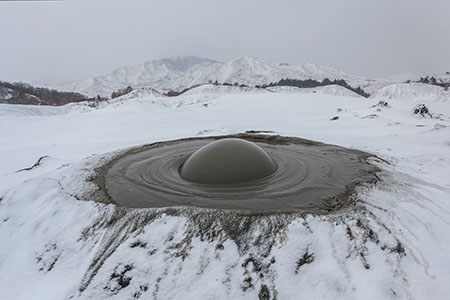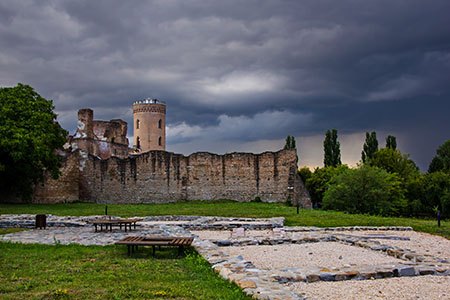
Mihai Eminescu Memorial House
Mihai Eminescu’s house from Ipoteşti is part of a memorial assembly that also includes the family church, commemorative church “St. Archangels Michael and Gabriel “, National Poetry Library and Memorial Museum “Mihai Eminescu” with exhibits illustrating the life and work of the poet.
The library contains 1700 exhibits and is equipped with a reading room and an outdoor amphitheater with 400 seats.
The city of residence, Botoşani has sights of cultural interest but also for relaxation.
County Museum includes sections of Ethnography, History and Archaeology and The Art – Gallery Ion Luchian.
A relaxing area of the city is Mihai Eminescu Park opened in 1869 under the neme Public Garden Vârnav. The park has an artificial lake with two bridges and alleys with statues of men of culture that lived in Botosani.
One of the city’s historic monuments is Popăuţi Monastery founded in 1496 by Stephen the Great (Ștefan cel Mare) and includes two tourist landmark; Church St. Nicolae Popăuţi and the Bell Tower.
In Botoşani there are several buildings with architectural value. A part of them are clustered in the Old Town and are apartment buildings dating from the XVII -XVIII centuries, built on a structure of overlapping vaulted cellars.
Other significant buildings for their architectural style: House Antipa (late nineteenth century); House Bolfosu (early century. XIX); Silion house (dating from around 1900), The City Hall (built in the late eighteenth century).
Traveling in Botoşani County you can turn your attention to other places to visit.
The botanical nature reserve Bucecea – Siret ponds is a wetland with herbaceous vegetation that shelters several rare flower species.
The Dacian fortresses from Stănceşti located 4 km West of Botoşani consists of a fortified complex with two Thracian – Getic fortresses dating from VI-III centuries b.c.. The site area is 50 ha. The construction still impresses today by the height of its mound (5m) and the moat of 6-7 m deep.
Vorona is a center with old traditional folklore. Tourists who come here can admire and buy folk art items reflecting ancient traditions.
Religious painting, wood carving, traditional fabrics, popular masks, wickers are some of the wonders that you find here.
Rich ethno-folk life of the village is reflected in the numerous nationally and internationally manifestations of gender organized locally: “Festival of Folk Song and Costumes”, “Inherited from the old”, “Folk Festival of Forest”, the camp-county of creative arts ” A brush for faith “
Another ethnographic center with elements of folk art, traditions and customs well kept and with a famous folk dance team is Tudora. Cultural and artistic events organized here are: Folklore Festival “Golden Cornfield”(June) and Festival of Winter Customs and Habits.
Ştefăneşti is a black pottery center that preserves popular handicraft traditions.
Ideal Escapes in Romania
































